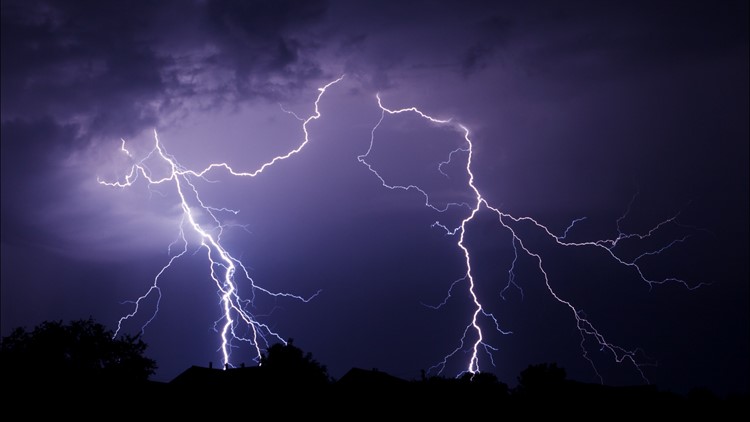NORFOLK, Va. — Whenever we think of thunderstorms, the first things that come to our mind are lightning, thunder, and heavy rain. But can there be a thunderstorm without any rain ever reaching the ground?
If you head out west where the air around the surface is very dry but there's still plenty of moisture higher in the atmosphere, a weather phenomenon called a "dry thunderstorm" can form.
Dry thunderstorms form similar to regular thunderstorms; warm air rising into the atmosphere allows for the air to cool and condense, forming clouds. As it continues to grow, the water droplets grow bigger and the storm grows stronger leading to a thunderstorm.
Rain begins to fall from the storm, but it hardly ever reaches the ground. A process called "virga" occurs, which is when rain droplets falling to the ground start to evaporate when they reach the extremely dry air toward the surface, leading to a storm with thunder and lightning, but no rain.
Dry thunderstorms are most likely to occur when the air temperature is hot, and the dewpoint temperature and humidity are low. When there is a larger difference between the air and the dewpoint temperature -- normally about 40ºF or more -- and during the peak of daytime heating is most likely when you would see a dry thunderstorm occur.
You would think this would be less of a danger since flash flooding can always be a concern with thunderstorms, but this poses an extremely dangerous risk of producing wildfires out in the west. Because lightning is so hot, the ground and vegetation are so dry, and with the lack of rain, lightning can easily start a fire with no water to stop it. These storms can also produce gusty winds at the surface, which can help intensify any fires in place, or give them the ignition to start.
They can also lead to more people being outside, contributing to a higher chance of being struck by lightning.



